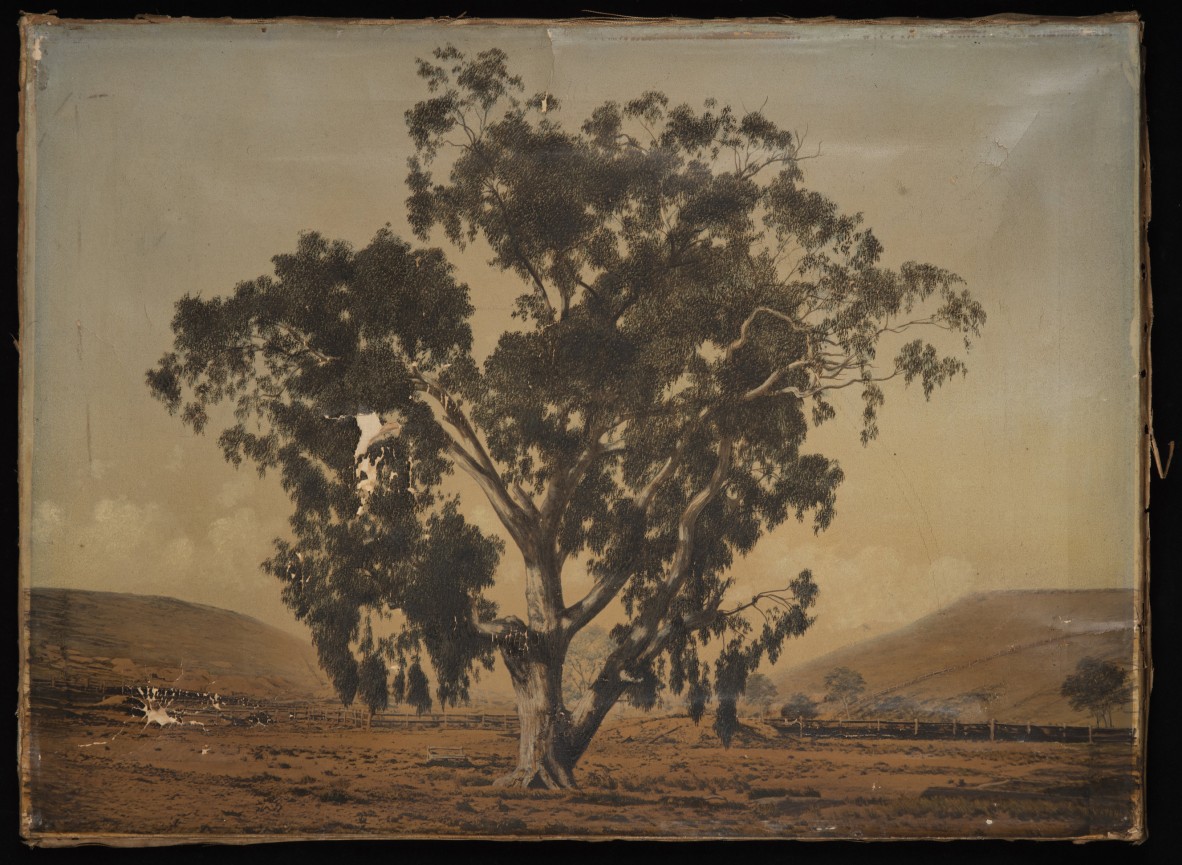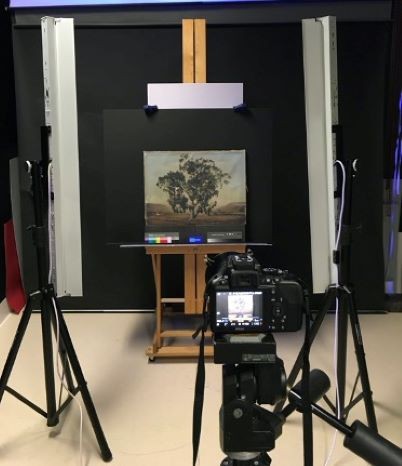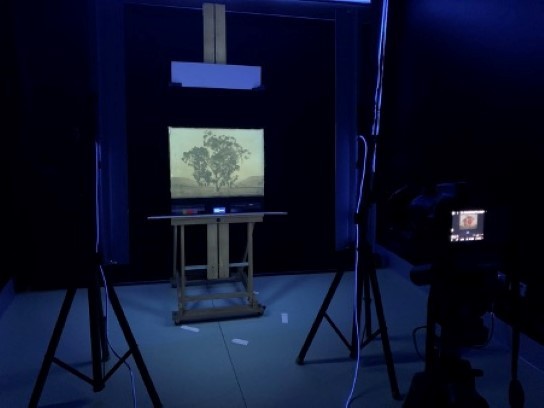There he glows! How UV radiation can tell us more about our collection treasures
By JOL Admin | 16 April 2020
This year conservators at State Library of Queensland are investigating the conservation of seven hand- coloured photographs by Richard Daintree . Through their subject matter and materials these collection treasures tell us a story. Daintree’s painted photographs portray colonial life and the landscape of Queensland in the late 1800s.
Researching the materials and techniques used by the artist is an essential part of formulating an ethical conservation treatment plan. In the case of Daintree’s painted photographs, ultra-violet (UV) radiation can help to make visible any adhesives, resins and varnishes that may have been applied to the surface of the artwork. Detecting the presence of these materials helps us to select which analytical techniques we can use to more precisely identify materials present. While adhesives, resins and varnishes may not be immediately apparent in normal visible light, they may fluoresce under UV radiation. This technique is called ultra-violet fluorescence (UVF) photography.
Where is UV radiation on the electromagnetic spectrum?
UV radiation is located just before the visible light band. Although there are no precise boundaries between the bands of the electromagnetic spectrum UV sits approximately between 10 nanometers (nm) and 385nm. Visible light starts at approximately 400nm.
Diagram of the electromagnetic spectrum. Source: Szantoi, Z. 2013
What does a UVF photograph look like?

Here is a photograph of Richard Daintree’s Red Gum Tree c. 1870s. This photograph has been taken in normal lighting conditions. The camera sees the image colours as the human eye does.
![UV photograph of Red Gum Tree by Richard Daintree [Works of Art]](/sites/default/files/styles/slq_standard/public/CN%2020%20003%20cropped%20V1.jpg?itok=84LA34Cy)
Here is a UVF photograph of Red Gum Tree. The image shows a cloudy blue colour across the surface of the artwork which is not perceptible under normal lighting conditions. This suggests a coating may have been applied to the surface.
What equipment is needed to take a UVF photograph?
To carry out this work we need specialised equipment including UV light banks that transmit a specific wavelength of 365 nm, a full spectrum converted DSLR camera that can capture radiation wavelengths beyond the visible spectrum and a set of lens filters. With the generous support of the Queensland Library Foundation we have been able to purchase this equipment.

Here you can see our UVF photography set up including a full spectrum converted DSLR camera (centre) and UV light banks (left and right). The light banks have been positioned diagonally facing the artwork to cast an even fluorescence across the surface.

To take a UVF photograph the ambient lights are switched off and the UV lights are switched on. The UV lights fluoresce across the surface of the artwork. Notice how the UV radiation has caused the surface of the artwork to fluoresce a cloudy blue colour. This is not perceptible in normal light.
What’s next…?
Keep an eye out for our future blog posts where we’ll share our research and the results of scientific testing.
Is there an item in the John Oxley Library collection that you would like to see glowing under UV radiation? Let us know via the Ask Us page by submitting a conservation query.
Acknowledgements
The Daintree Project is funded by the Queensland Library Foundation. With their generous support we have been able to purchase this equipment.
About the author
Amelia O’Donnell is an emerging conservator working at the State Library of Queensland. She is currently providing technical research support to the Daintree Project and loves all things art, science and fluorescence!
Comments
Your email address will not be published.
We welcome relevant, respectful comments.